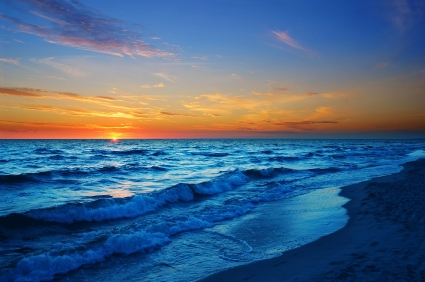Global warming is a major threat to life in the oceans – and humans who depend on that life (see Ocean dead zones to expand, “remain for thousands of years”). As one recent study found:
Global warming may create “dead zones” in the ocean that would be devoid of fish and seafood and endure for up to two millennia….
Its authors say deep cuts in the world’s carbon emissions are needed to brake a trend capable of wrecking the marine ecosystem and depriving future generations of the harvest of the seas.
Jane Lubchenco – Obama’s terrific choice for administrator of the National Oceanic and Atmospheric Administration (NOAA) – discussed the threat to the ocean from global warming in a long interview on NPR’s Diane Rehm show yesterday (mostly in the second 20 minute segment). You can catch it here.
If you want to understand ocean acidification better, see this BBC story, which explains:
Man-made pollution is raising ocean acidity at least 10 times faster than previously thought, a study says.
Or see this Science magazine study, “Evidence for Upwelling of Corrosive “Acidified” Water onto the Continental Shelf” (subs. req’), which found
Our results show for the first time that a large section of the North American continental shelf is impacted by ocean acidification. Other continental shelf regions may also be impacted where anthropogenic CO2-enriched water is being upwelled onto the shelf.
Or listen to the Australia’s ARC Centre of Excellence for Coral Reef Studies, which warns:
The world’s oceans are becoming more acid, with potentially devastating consequences for corals and the marine organisms that build reefs and provide much of the Earth’s breathable oxygen.
The acidity is caused by the gradual buildup of carbon dioxide (CO2) in the atmosphere, dissolving into the oceans. Scientists fear it could be lethal for animals with chalky skeletons which make up more than a third of the planet’s marine life….
Corals and plankton with chalky skeletons are at the base of the marine food web. They rely on sea water saturated with calcium carbonate to form their skeletons. However, as acidity intensifies, the saturation declines, making it harder for the animals to form their skeletal structures (calcify).
“Analysis of coral cores shows a steady drop in calcification over the last 20 years,” says Professor Ove Hoegh-Guldberg of CoECRS and the University of Queensland. “There’s not much debate about how it happens: put more CO2 into the air above and it dissolves into the oceans.
“When CO2 levels in the atmosphere reach about 500 parts per million, you put calcification out of business in the oceans.” (Atmospheric CO2 levels are presently 385 ppm, up from 305 in 1960.)
If we want to save life in the oceans – and save ourselves, since we depend on that life – the time to start slashing carbon dioxide emissions is now.



